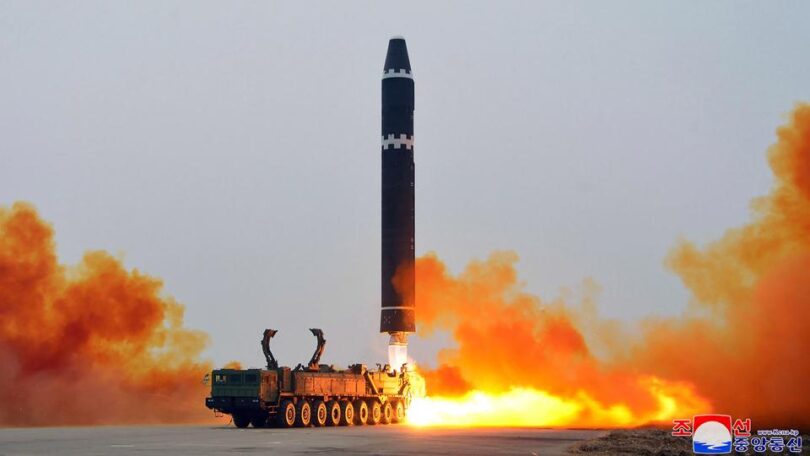SEOUL (AP): North Korea has confirmed that it carried out a new intercontinental ballistic missile (ICBM) test saying it was meant to further bolster its “fatal” nuclear attack capacity against its rivals.
In a statement issued on Sunday, it also threatened additional powerful steps in response to the planned military training between the United States and South Korea.
Saturday’s ICBM test, the North’s first missile test since January 1, signals its leader Kim Jong Un is using his rivals’ drills as a chance to expand his country’s nuclear capability to enhance its leverage in future dealings with the United States.
An expert says North Korea may seek to hold regular operational exercises involving its ICBMs.
North Korea’s official Korean Central News Agency said Pyongyang’s launch of the existing Hwasong-15 ICBM was organised “suddenly” without prior notice at Kim’s direct order.
KCNA said the launch was designed to verify the weapon’s reliability and the combat readiness of the country’s nuclear force. It said the m issile was fired at a high angle and reached a maximum altitude of about 5,770 kilometers (3,585 miles), flying a distance of about 990 kilometers (615 miles) during a 67-minute flight before accurately hitting a pre-set area in the waters between the Korean Peninsula and Japan.
The steep-angle launch was apparently aimed at avoiding neighboring countries.
The flight details reported by North Korea, which roughly matched the launch information previously assessed by its neighbors, show the weapon is theoretically capable of reaching the mainland US if fired at a standard trajectory.
‘Powerful physical nuclear deterrent’
The Hwasong-15 launch demonstrated the North’s “powerful physical nuclear deterrent” and its efforts to “turn its capacity of fatal nuclear counterattack on the hostile forces” into an extremely strong one that cannot be countered, KCNA said.
Whether North Korea has a functioning nuclear-tipped ICBM is still a source of outside debate, as some experts say the North hasn’t mastered a technology to protect warheads from the severe conditions of atmospheric reentry.
The North has claimed to have acquired such a technology.
The Hwasong-15 is one of North Korea’s three existing ICBMs, all of which use liquid propellants that require pre-launch injections and cannot remain fueled for extended periods.
The North is pushing to build a solid-fueled ICBM, which would be more mobile and harder-to-detect before its launch.
“Kim Jong Un has likely determined that the technical reliability of the country’s liquid propellant ICBM force has been sufficiently tested and evaluated to now allow for regular operational exercises of this kind,” said Ankit Panda, an expert with the Carnegie Endowment for International Peace.
Chang Young-keun, a missile expert at Korea Aerospace University in South Korea, said that North Korea appeared to have launched an upgraded version of the Hwasong-15 ICBM.
Chang said the information provided by North Korea showed the missile will likely have a longer potential range than the standard Hwasong-15.
The North’s launch came a day after it vowed an “unprecedentedly” strong response over a series of military drills that Seoul and Washington plan in coming weeks.
In a separate statement Sunday, Kim Yo Jong, the influential sister of Kim Jong Un, accused South Korea and the United States of “openly showing their dangerous greed and attempt to gain the military upper hand and predominant position in the Korean Peninsula.”







